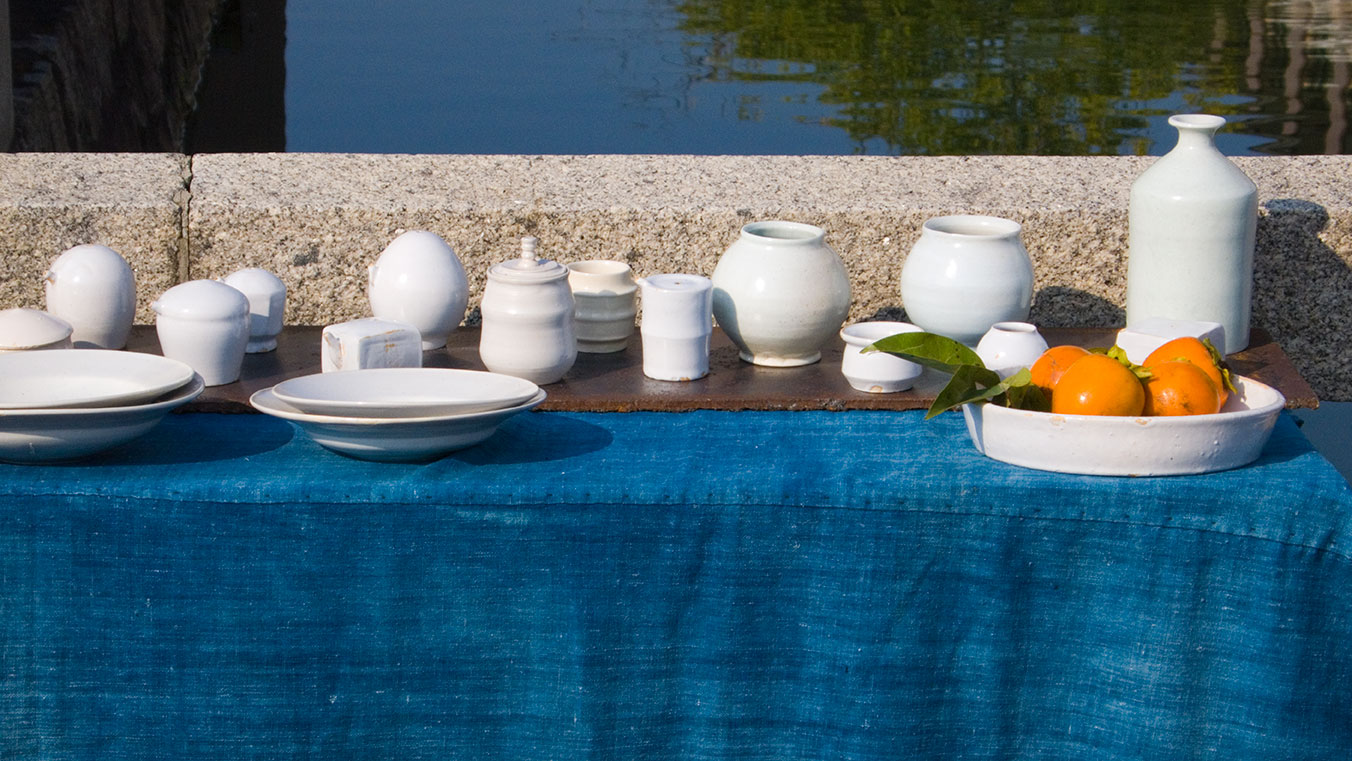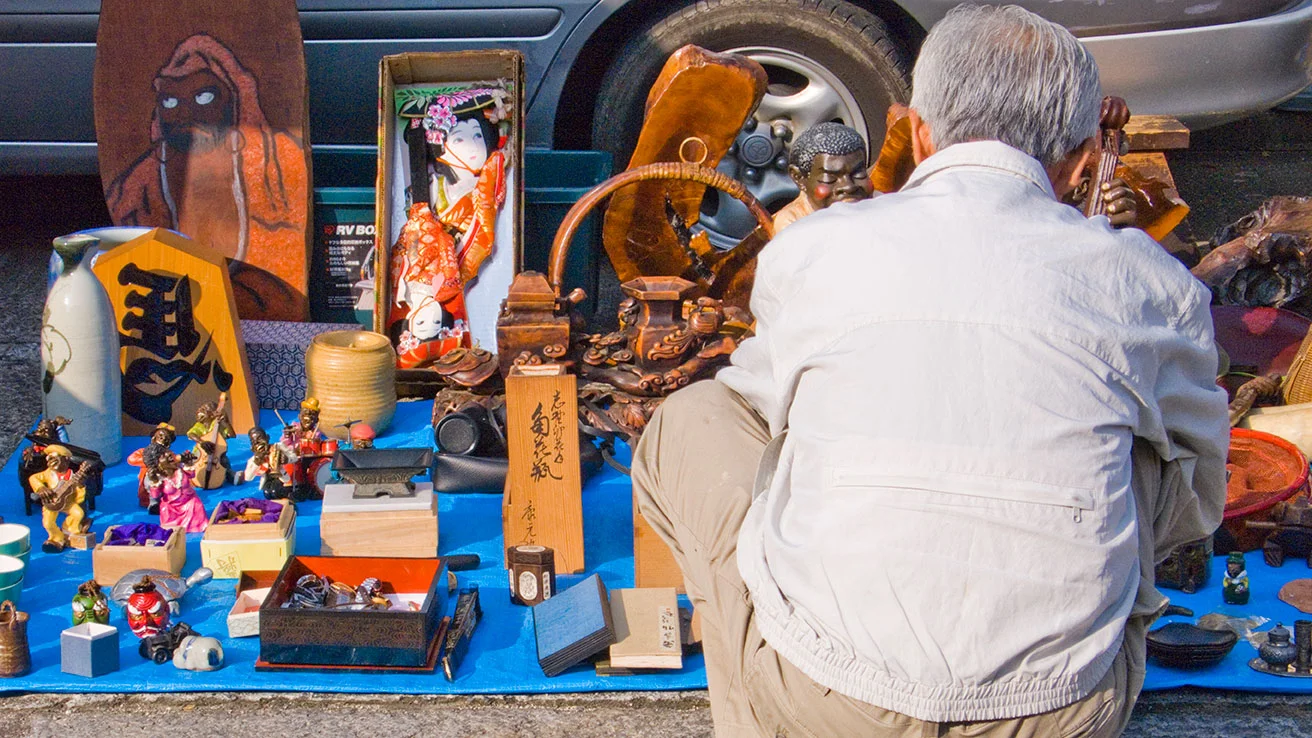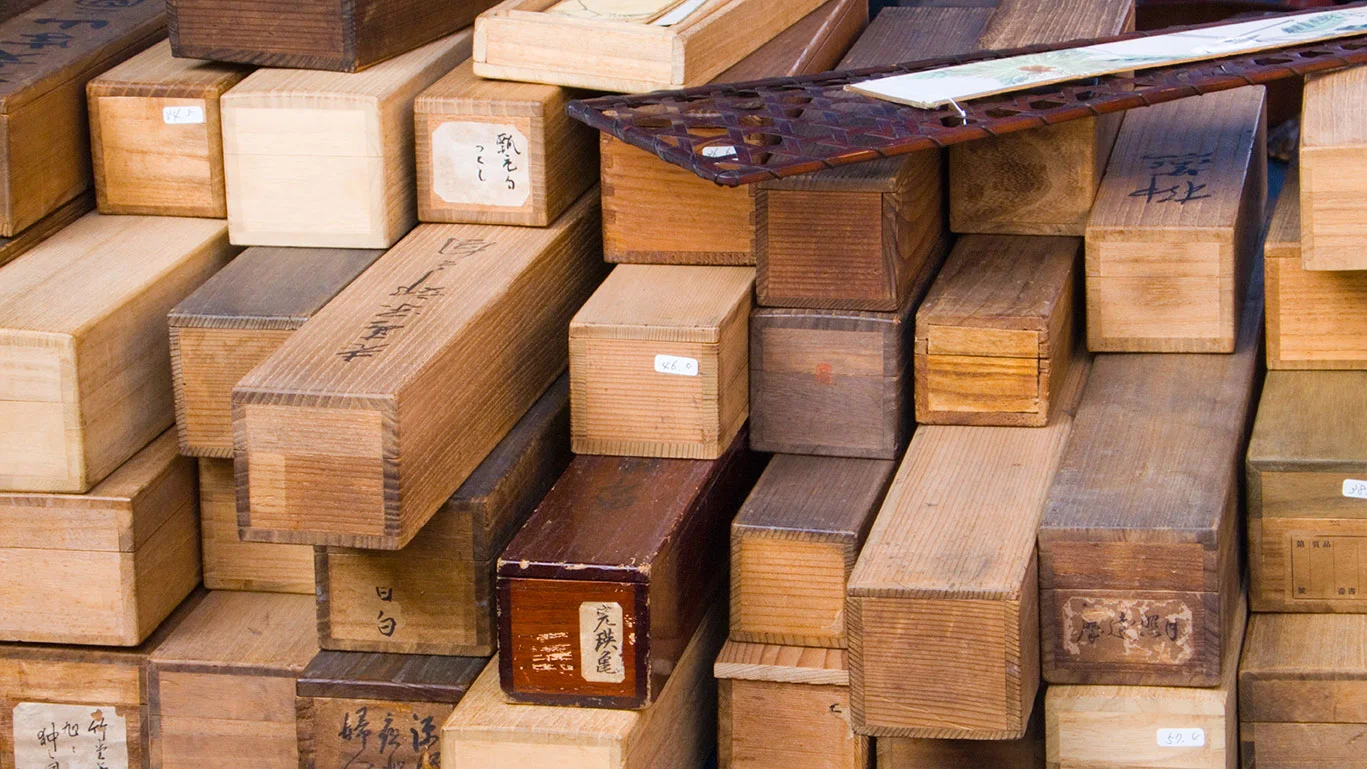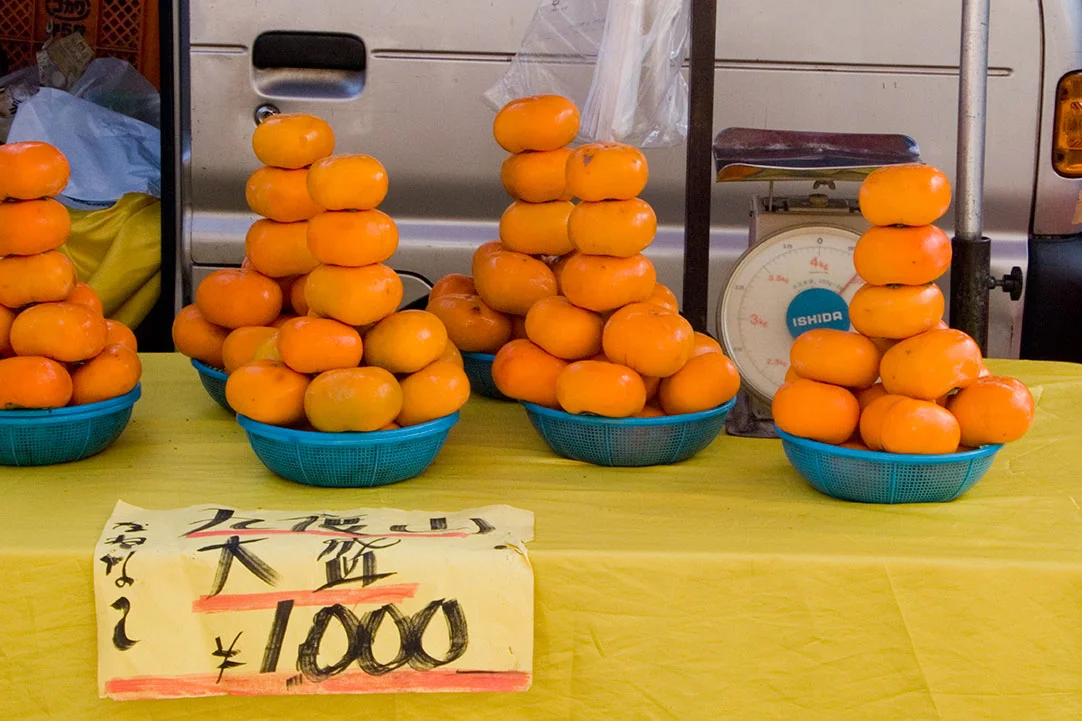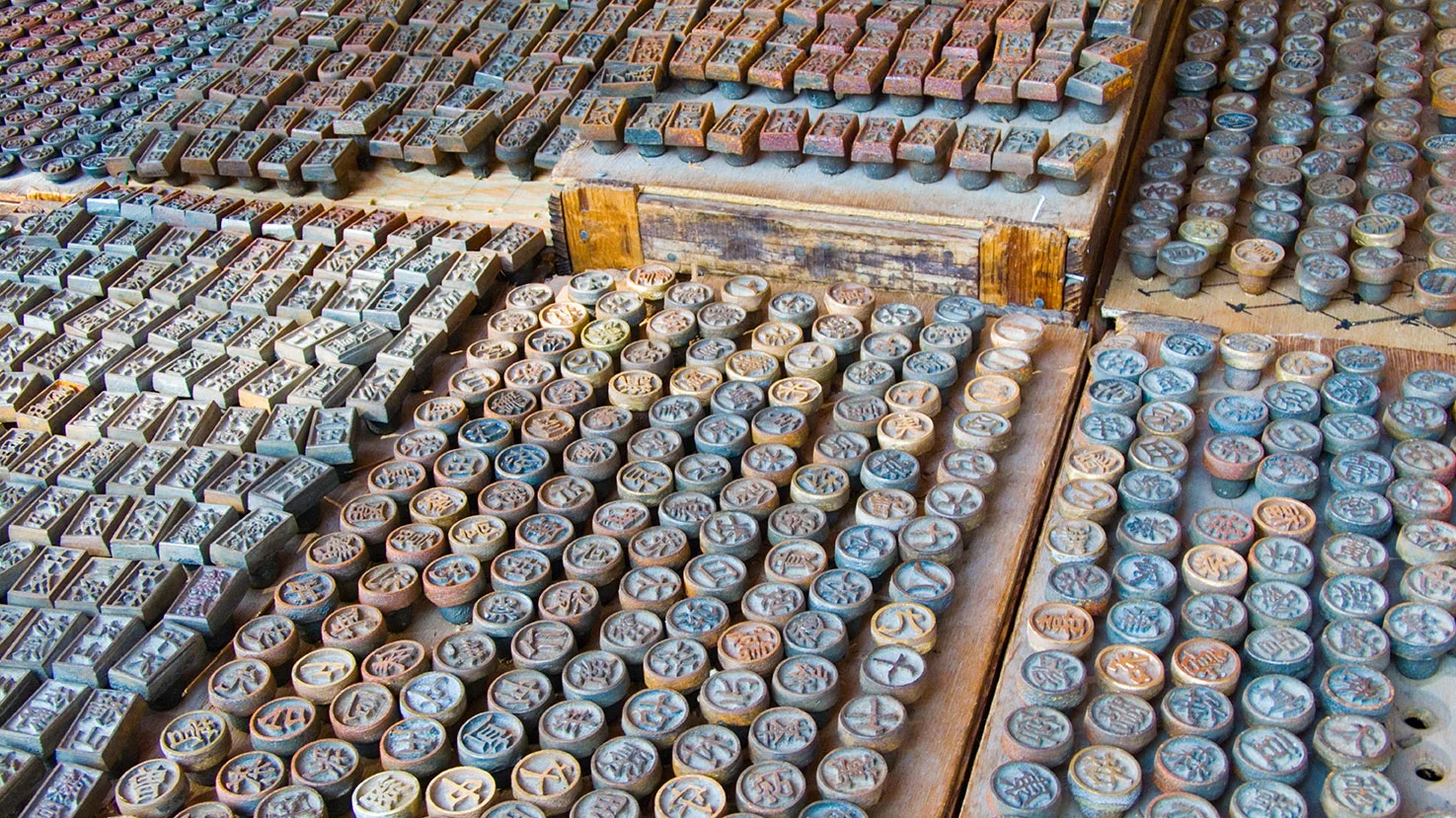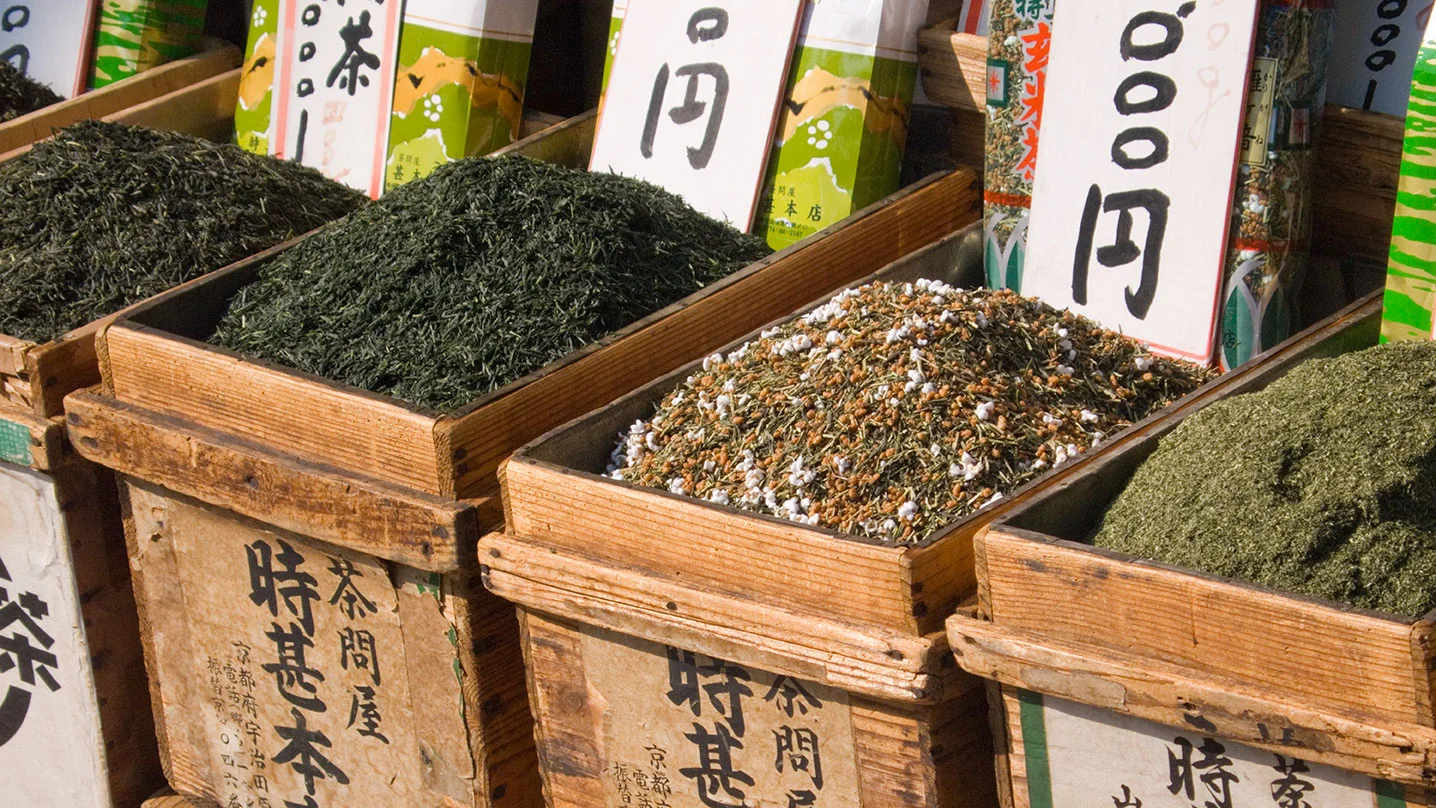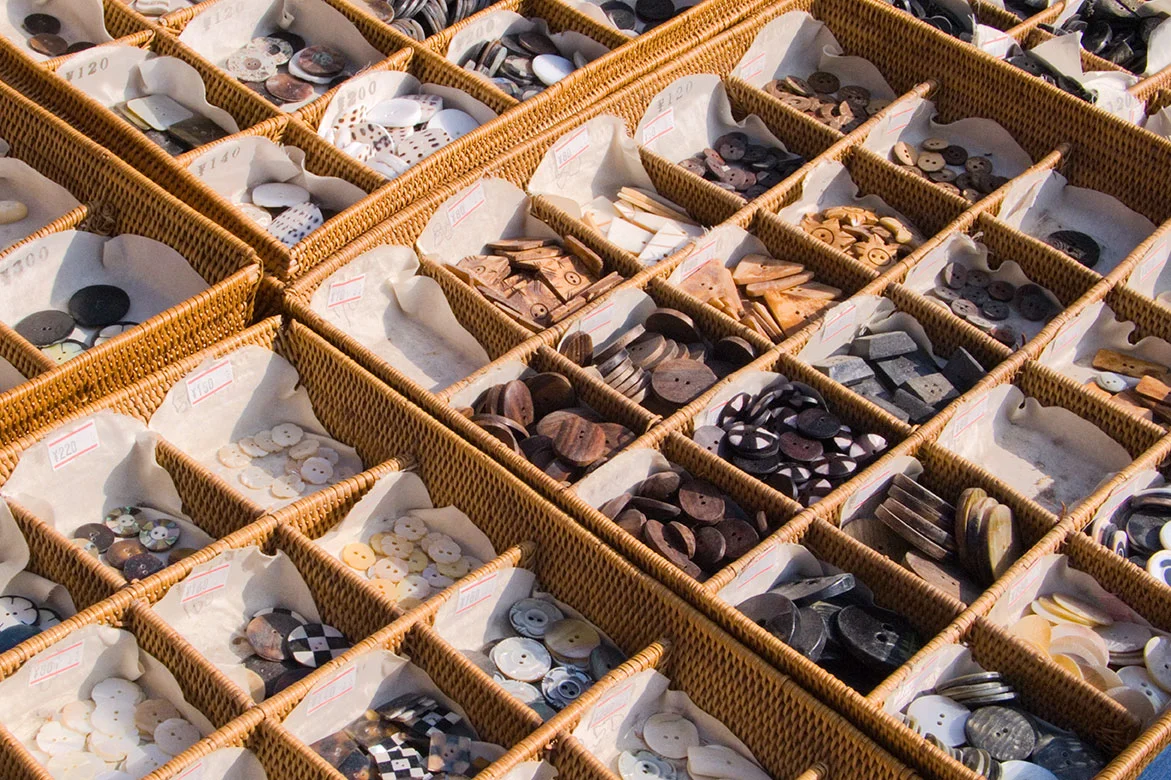The old man crouched on his haunches, lost in thought. As a stream of people flowed past, he reached forward, quietly shifting the placement of varied and sundry antiques on a bright blue blanket: an incense holder, teapots, rice bowls, binoculars, reproductions of classic Zen art on roughly cut wood, books for copying sutras, quartz watches, lacquered boxes, flower vases, and six-inch tall carved figurines meant to represent an African-American blues band.
The To-ji Flea Market happens on the 21st of every month on the grounds of To-ji Temple, about a ten minute walk from the JR Kyoto train station. I wasn't at the market to purchase a memento of our trip. I wanted to observe how these few hundred shopkeepers — from food stalls to pottery, from old picture scrolls to antique buttons — displayed and maintained their goods.
Arrangement in Japan is an art unto itself, with its own kind of psychology. Any designer who has dabbled in visual merchandising knows that the specific qualities of an arrangement have a gut-level influence on how we perceive information. A pile of leaves can look peaceful and natural, while a haphazard stack of paper on a messy desk can incite a riot. Both can be shaped by human hands, but a truly great visual stylist is able to infuse even the most mundane objects with a kind of spirit that seems both spontaneous and inevitable.
